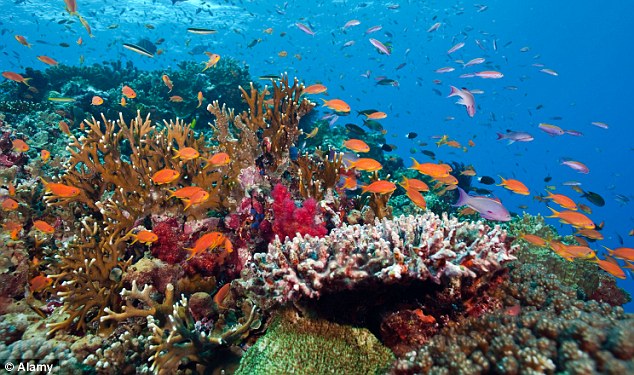
Scientists print 3D models of Great Barrier Reef in bid to save it
Researchers creating virtual maps of coral reefs to precisely model how structure altered by environmental change
Source: www.theguardian.com

Scientists are using 3D printing technology to create prosthetic coral that could be used to help the Great Barrier Reef recover from bleaching and storms.
Researchers at the University of Sydney are creating virtual 3D maps of coral reefs to precisely model how their structure is altering as a result of environmental change.
With her supervisor, associate professor Will Figueira, Dr Renata Ferrari established the Ecological 3D Modelling Hub to precisely quantify the structure of the delicate reef ecosystem.
“The idea behind that was to map, monitor and model the coral reefs and other marine ecosystems in three dimensions,” she said. “If you can create a 3D map, then you can measure it, because you literally have a map of the corals on your computer. You can get anything you want out of it.”
The technology is relatively new, based on photogrammetry: the science of making 3D reconstructions from photography. These virtual models are being used to print models of the coral that could be planted on the reef to give it support as it recovers from adverse events such as bleaching and storms.
The 3D-printed coral would provide a habitat for fish, which eat the algae that kills the coral, as well as a structure on which developing coral can grow.
Artificial reefs have been created with cinder blocks or deliberately sunk ships, said Ferrari, “but we’ve never had an artificial reef that resembles a natural reef structure”.
“With the 3D-printed reefs, that’s the main advantage. You’re providing the exact same structure that an actual natural reef provides, because we got the models from the reefs before they bleached. We are literally replicating it.”
Having tested the 3D-printed corals’ resilience in water, Ferrari hoped to plant some on the Great Barrier Reef this year. The extent of the operation and the number of sites depends on funding, though a pilot program would cost around $150,000.
Ferrari was hopeful about the potential to save the Great Barrier Reef, she said, despite the doomsaying about its prospects. Though large parts of the northern end had died from sustained bleaching, the south was “pretty much intact”.
“Coral reefs have been around for hundreds and hundreds of years,”she said. “Because of the connectivity of the Great Barrier Reef, this type of approach will still work. You put the reefs down and the coral larvae will arrive from other parts of the reef.”
But, she warned, any local initiatives will be redundant if climate change – the number-one threat to reefs around the world – is not addressed at a global level.
Mass bleaching brought on by increasing ocean temperatures, acidification caused by carbon emissions, and more frequent strong storms are “smashing” coral reefs on multiple fronts, said Ferrari.
Without global policy to target the impacts of climate change, targeted initiatives such as the one she was proposing were essentially futile. “But if carbon emissions are curbed … local and regional interventions can have a huge, positive impact and effect on the health and resilience of the reef.
“What local initiatives can do is buy the reef a little bit of time to recover.”
